Chianti wine
From Fiasco to Chianti Classico and Gran Selezione
Ah, Chianti — few wines are as unmistakably Italian as this one. Just the name alone conjures up images of rolling Tuscan hills, cypress-lined roads, and long, lazy lunches under the sun.
But what exactly is Chianti? Let’s start with the basics.
What is Chianti Wine?
At its heart, Chianti is a red wine made primarily from the Sangiovese grape - at least 70%, to be precise. For the more prestigious Chianti Classico, that number rises to 80% or more.
Chianti hails from the beautiful region of Tuscany, especially the area that stretches between Florence, Siena, and Arezzo - the golden triangle of Tuscan wine. The official production zones (there are eight of them!) were first established way back in 1932.
Besides the famous Chianti Classico area right in the center, there are several neighboring subregions that produce Chianti too - including Colli Aretini, Colli Fiorentini, Colli Senesi, Colline Pisane, Montalbano, Montespertoli, and Rufina. Check out the new Chianti Wineries map by Avinturo.
Wines from these areas that meet strict production standards can carry the DOCG classification - Italy’s highest guarantee of quality and authenticity.
And then there’s more: depending on how long a Chianti has been aged, you might see terms like Superiore, Riserva, or even Gran Selezione on the label. Each of these marks another step up in richness, depth, and complexity.
Of course, this is just the short version - Chianti’s story is far too fascinating (and delicious!) to sum up in a few paragraphs. On the next page, I’ll dive deeper into its history, the differences between each subregion, and how Chianti evolved from its rustic fiasco bottle days into the world-class wine it is today.
From Fiasco to Chianti Classico and Gran Selezione
Chianti is one of Italy’s most iconic wines — a name that instantly brings Tuscany to mind: rolling hills, sun-dappled vineyards, and those charming little villages tucked between Florence, Siena, and Arezzo.
But it wasn’t always held in such high regard. Not long ago, Chianti was often seen as simple table wine, and the infamous straw-covered bottles — the fiasco — didn’t exactly scream sophistication.
Today, things are very different. Thanks to decades of careful improvements and modern winemaking techniques, Chianti has earned a stellar reputation. The crowning achievement? Chianti Classico DOCG Gran Selezione — the pinnacle of quality in the region. Now, “Chianti” is synonymous with excellence.
On this page, I’ll take you on a journey through Tuscany’s enchanting Chianti region. Together, we’ll explore:
- The rich history of Chianti wine
- The different types of Chianti
- The DOCG regulations and what makes Chianti Classico special
- The Chianti wine routes and the region itself
- Famous Chianti wineries
History of Chianti Wine
Many older wine lovers still remember Chianti in the iconic straw baskets from the 1960s–80s. And you do still see them from time to time! But the story of Chianti goes back far longer than those charming bottles.
The Etruscans primarily used wine as a trade commodity. As for the Romans? Well, we don’t know much about what they thought of Chianti — probably nothing remarkable. After the fall of the Roman Empire, winemaking in Tuscany largely disappeared, only to re-emerge during the Middle Ages. Noble families such as Antinori, Frescobaldi, and Ricasoli were already making their mark on Tuscan wine back then, and many are still producing outstanding wines today.
In 1716, Duke Cosimo de’ Medici took a more professional approach. He defined the best wine regions in Tuscany and introduced regulations for their wines. Among them were Chianti, Pomino, Carmignano, and Valdarno Sopra.
Until the 19th century, Chianti was made almost entirely from Sangiovese grapes and consumed very young. Unfortunately, its high acidity and tannin often made it harsh and mediocre.
Enter Baron Bettino Ricasoli, resident of Brolio Castle in Chianti. Over 30 years of experiments, he developed the ideal blend: 70% Sangiovese, 15% Canaiolo, and 10% white grapes (Malvasia and Trebbiano Toscano). He also suggested a second fermentation using dried grapes (Metodo Governo), which smoothed the wine and made it much more drinkable.
When the Chianti wine region received a DOC status in 1967, this formula became the standard. But as demand soared, overproduction led to a drop in quality, and the straw fiasco bottles lived up to their humble reputation.
The Renaissance of Chianti
A dedicated group of winemakers decided it was time for a change. They updated production methods, removed the second fermentation, and eliminated white grapes from many wines. Some of the resulting wines didn’t meet the old DOC guidelines but were higher quality — these were classified as IGT wines. Famous examples include Tignanello, Le Pergole Torte, Flaccianello, and Cepparello.
Promotion to DOCG
In 1974, Chianti was promoted to DOCG, Italy’s highest wine classification. Rules became stricter: yields per hectare were reduced, Sangiovese took a bigger role in the blend, and white grapes were minimized. Winemakers also experimented with better techniques to improve grape quality.
By 1996, the Chianti Classico DOCG was established. With its own regulations, this designation represents the finest wines from the original Chianti heartland - a true symbol of Tuscany’s vinous excellence.
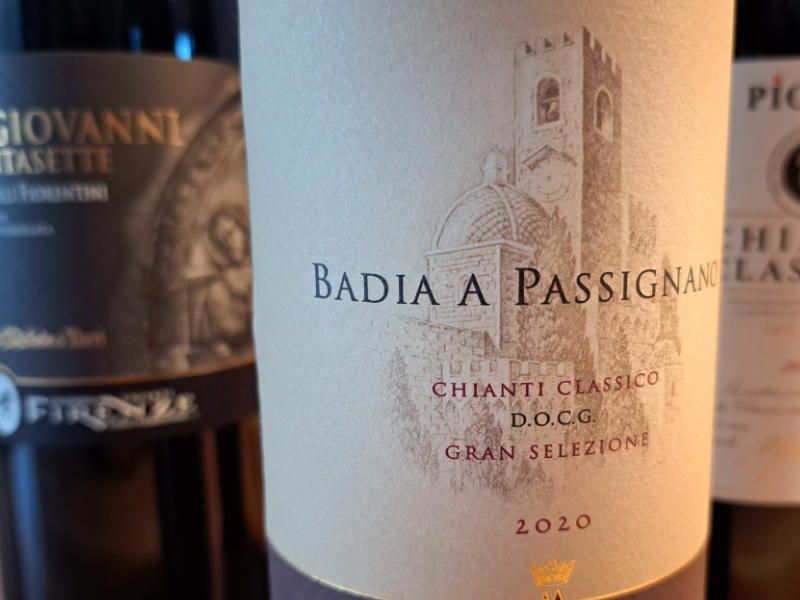
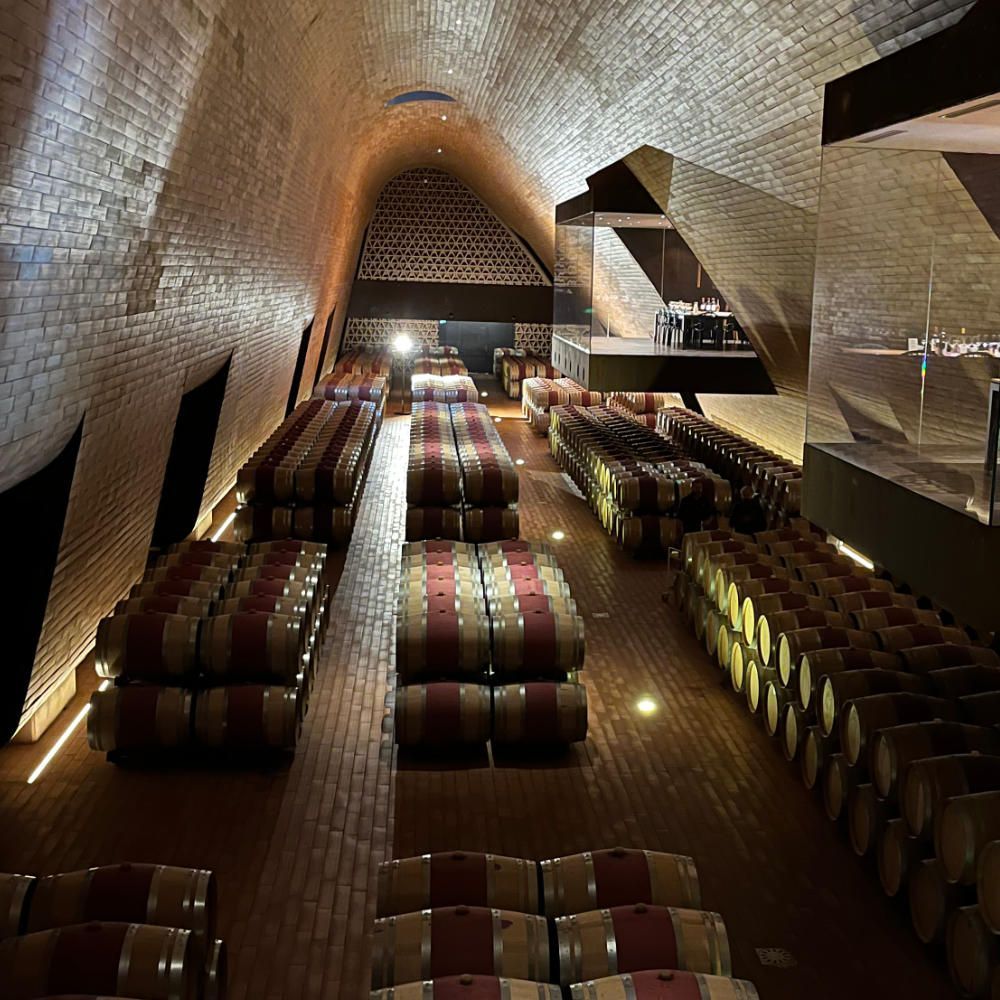
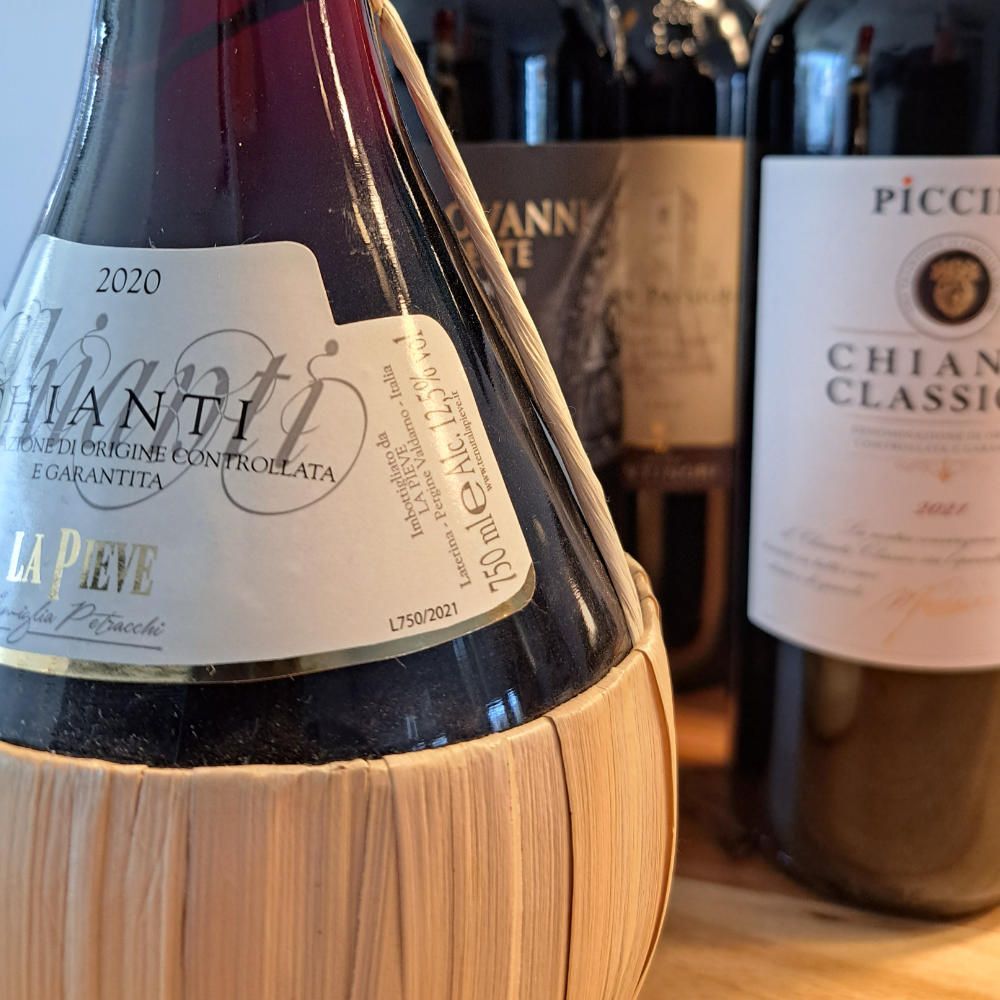
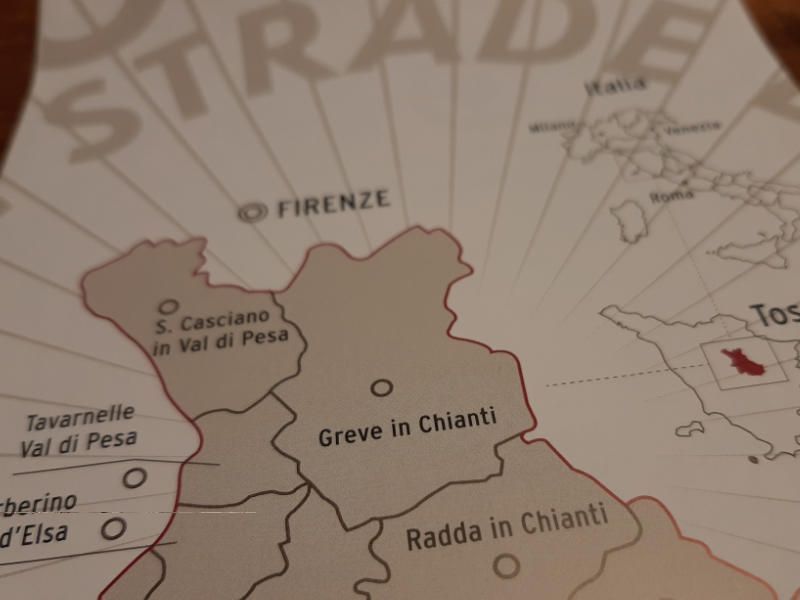
All Types of Chianti at a Glance
When it comes to Chianti, there’s a lot more than just the name on the bottle. Thanks to DOCG and DOCG classifications, you can actually distinguish several different types of Chianti wine, each with its own rules, aging requirements, and personality.
Here’s a quick overview of the main categories:
- Chianti Classico DOCG
- Chianti DOCG
- Vin Santo del Chianti Classico DOC
- Vin Santo del Chianti DOC
It’s worth noting that Chianti DOCG is produced across eight sub-regions, but Chianti Classico is by far the most famous and recognized.
On Winefolly’s Chianti page, there’s a lovely infographic showing the quality pyramid of Chianti wines and the different sub-regions. Here’s a simplified breakdown of how Chianti wines are generally ranked, mainly based on aging in the bottle:
- Gran Selezione – only for Chianti Classico, aged at least 2.5 years
- Riserva – 2 years extra
- Chianti Classico – 1 year extra
- Chianti Colli Fiorentini – 1 year extra
- Chianti Rufina – 1 year extra
- Superiore – 1 year extra (all sub-regions)
- Chianti Montespertoli – 9 months extra
- Chianti – 6 months extra
- Chianti Colli Aretini, Colline Pisane, Colli Senesi, Montalbano – 6 months extra
- Chianti DOCG
Chianti was awarded DOC status in 1967 and upgraded to DOCG in 1984. The seven sub-regions where Chianti DOCG may be produced are:
Colli Aretini, Colli Fiorentini, Colline Pisane, Colli Senesi, Montalbano, Montespertoli, and Rufina.
Across these regions, production covers over 14,000 hectares, yielding roughly 91 million bottles of Chianti.
Key rules for Chianti DOCG:
- Minimum 70% Sangiovese grapes
- Up to 30% other red grapes (Cabernet Franc or Cabernet Sauvignon)
- Maximum 10% white grapes (except Colli Senesi, which only allows red grapes and requires at least 75% Sangiovese)
- Aging requirements: Superiore – 1 extra year; Riserva – 2 extra years
- Alcohol content: 11.5%–13% depending on sub-region
- Aging periods: from 4 months (Montespertoli) to 2 years (Colli Senesi Riserva), with at least 8 months in barrels and 4 months in bottle for the longest-aged wines
Chianti Classico DOCG
The Chianti Classico DOCG is the heart and soul of Chianti — wine from the original Chianti region. While Chianti DOCG covers all eight sub-regions, Classico is the original, most iconic area, covering nearly 5,500 hectares and producing about 33.6 million bottles per year. Roughly 80% of it is exported, with North America, Germany, Scandinavia, and the UK being the biggest consumers.
Differences from Chianti DOCG:
- Minimum 80% Sangiovese (higher than standard DOCG)
- No white grapes allowed since 2006
- Remaining 20% can include red grapes, both international (Cabernet Sauvignon, Cabernet Franc, Merlot, Syrah, Petit Verdot) and local varieties (Canaiolo, Colorino, Mammolo, Malvasia Nera, Pugnitello, Foglia Tonda)
Chianti Classico is available in three quality levels:
Chianti Classico (Annata)
- Minimum aging: 1 year
- Minimum alcohol: 12%
Chianti Classico Riserva
Minimum aging: 2 years (including 3 months in bottle)
Minimum alcohol: 12.5%
Chianti Classico Gran Selezione
Minimum aging: 2.5 years (including 3 months in bottle)
Minimum alcohol: 13%
Grapes must come only from the winery’s own vineyards.
Chianti Classico Gran Selezione
Since 2014, a new, top-tier category was introduced for Chianti Classico. Wines from the 2010 vintage onward that meet the updated regulations can proudly carry this prestigious label.
The Chianti Classico Gran Selezione DOCG represents the absolute cream of the crop — the very best grapes from each winery, carefully selected and vinified. In fact, these wines make up only about 5% of all Chianti Classico production, so they’re truly special.
And there’s an extra touch of exclusivity: the grapes must come entirely from the winery’s own vineyards, ensuring the highest quality and a unique expression of the estate’s terroir. It’s Chianti Classico at its finest — elegant, refined, and unmistakably Tuscan.
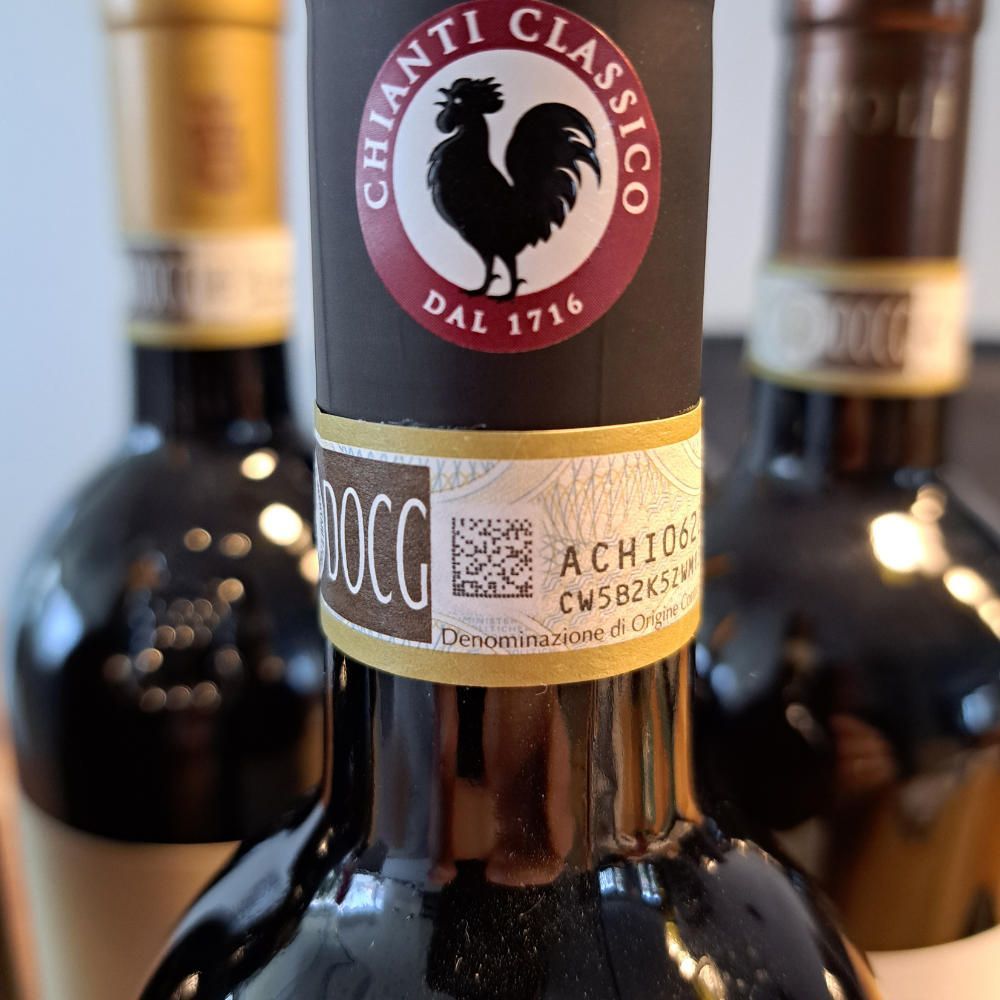
Chianti Classico (and the Black Rooster)
Of all the Chianti varieties, Chianti Classico is the most famous. The Chianti Classico region is one of eight sub-regions within the Chianti region.
In 1924, winemakers from the most original Chianti region wanted to protect their wine from the already growing competition from other wineries marketing Chianti. Driven by the desire for quality (and the protection of their wine), the winemakers from the original region founded an association of winemakers. This Consorzio del Gallo Nero (Consorzio of the Gallo Nero) worked together to protect their wine.
The wineries are still affiliated, although the name has changed. Under the name Consorzio Vino Chianti Classico, they collectively strive for the very best quality. The image of the famous Black Rooster (il Gallo Nero) is still used by the member companies. Not all winemakers in this region are members; it is not mandatory.
Legend of the Black Rooster
(the Gallo Nero)
In the Middle Ages, the rival city-states of Florence and Siena agreed to settle their dispute over border territories with a contest. At dawn, a knight on horseback would depart from each city. Where the two knights met, the border would be determined.
Dawn was announced by the crowing of a rooster. In Siena, a beautiful white, well-fed rooster was selected for this purpose. In Florence, however, a skinny, starving black rooster was chosen. This rooster awoke earlier due to hunger and immediately began crowing.
Because the knight was able to depart much earlier from Florence, he met the Knight of Siena just 12 km from Siena. The largest area between the two cities (including the Chianti region) thus came under Florentine control.
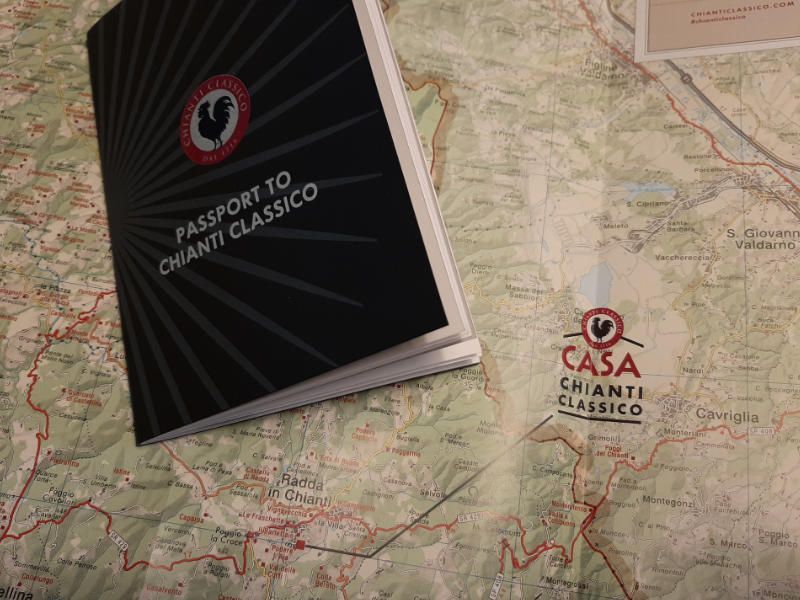
Sources and inspiration
To make it easy for you to start discovering Chianti wines online (besides our new Chianty winery map), I've compiled a list of relevant Chianti websites and blogs.
Winemaker Consortia
- Chianti Wine Consortium
- Chianti Classico Wine Consortium
- Chianti Colli Fiorentini Wine Consortium
- Chianti Colli Senesi Wine Consortium
- Chianti Rufina Wine Consortium
The Various Wine Roads
- Chianti Classico Wine and Oil Route (the original Chianti Classico wine route)
- Strada del Vino delle Colline Pisane
- Chianti Colli Aretini Wine Route
See also the other wine routes in Tuscany on the Tuscan Wines and Wine Regions page. Or you can view the overview of all Italian wine roads. There are almost 100 of them.
Tourism in Tuscany and Chianti
Happy tasting!